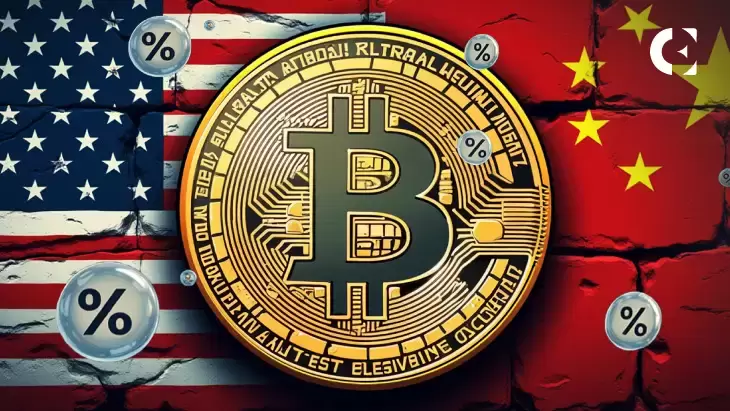 |
|
 |
|
 |
|
 |
|
 |
|
 |
|
 |
|
 |
|
 |
|
 |
|
 |
|
 |
|
 |
|
 |
|
 |
|
Cryptocurrency News Articles
Understanding Solana's (SOL) Inflationary Model and Its Effects on the USD Price
Nov 20, 2024 at 02:28 am
One of the most popular and innovative blockchains is Solana (SOL), which is one of the most popular chains for high throughput and very fast transaction

Solana (SOL) is one of the most popular blockchains for high throughput and very fast transaction speeds for less than a dollar. But what makes Solana different from most other cryptocurrencies is its inflationary model that enables the network to create new tokens, which help secure the network and reward validators. Though Solana’s inflationary model is essential to the ecosystem, it also directly impacts where the currency is valued in USD terms, something investors need to appreciate.
To keep up with the most current updates on Solana’s value, visit this Solana USD tracker that shows the real price of Solana and presents its historical data to track SOL value change against USD.
Understanding Solana’s Inflationary Model
The Solana coin has an inflationary model contrary to Bitcoin, in which it has a capped amount of 21M, which guarantees a constant level of participation in the network. We refer to inflation in this context as the mechanism wherein the supply of SOL tokens grows over time as a reward to those who validate transactions and contribute to network security. However, unlike the fixed supply of BTC, Solana’s model prescribes a periodic and potentially predictable issuance of new tokens potentially introducing a positive and a negative effect on the price of SOL in USD.
1. Initial Inflation Rate
Solana set an initial annual inflation rate to be about 8% when it launched. This results in approximately 8% added to the total supply every year through rewards for those who validate the network (aka, validators). First, we imagine an initial rate at a high enough level of incentive for validators to stake their SOL and to help maintain the network.
2. Decay Rate
Another part of Solana’s inflationary model is a “decay rate” — the rate will increase, but a decay rate will cut that in half. The model is currently meant to drop 15 percent annually until its long term steady level of 1.5 percent. This slow reduction over time of inflationary rewards is to try and offset the need to incentivize validators with the need to fix the SOL supply growth.
3. Token Burning Mechanism
Solana burns part of transaction fees to kill inflation. As transaction fees on Solana are extremely low, these burns actually contribute to the deflationary component of the tokenomics, partially offsetting the inflation, and may potentially provide support for the price of the token over time.
Inflation and its Effects on the Price of Solana in USD
Multiple channels determine Solana’s USD price in response to the inflationary model. Here’s how it plays out:
1. Pressure to Increase Supply and Prices
An inflationary model has one of the most direct effects; a steady increase in token supply. The more SOL tokens being injected into the circulation, the less likely it is to have an uptrend in the SOL price (against the USD). The basic principle of supply and demand applies here: But if demand for SOL doesn’t expand proportionally with its overall supply, the growing quantity of SOL tokens may weaken the price in USD terms.
In order for Solana’s USD price to be sustainable and increase, demand for SOL must be growing — meaning Solana needs more users, developers, and applications using its network and, therefore, buying up SOL for its ongoing growth. Inflation will create an additional supply and if there is already high demand, it would help drive the value of the token in the free market.
2. Encouraging Staking and Helping to Reduce Circulating Supply
Solana’s inflationary rewards are designed to incentivize staking – the act of locking up your SOL to support the network and earn rewards. With each additional user staking, a significant amount of SOL is out of circulation. With less supply of tokens available and thus less to sell on exchanges, this can lend to taking the pressure off of the price from inflation.
If most SOL tokens are staked, the circulating supply constraints, and could work in favor of SOL, inflating the price in terms of SOL/USD. By staking, it becomes a balance mechanism, balancing inflation and potentially creating upward price pressure if the demand is strong.
3. Inflation and Validator Incentives
Solana’s inflationary model is a buffer for validators so they get something in return for securing the network and decentralization. Investor confidence directly increases the dollar value of Solana, which will increase the more robust and secure network. This is a good thing, but also a bad thing if inflation rewards are deemed too high with no support from the growth of the network in use.
To counteract these concerns, Solana plans to do so by slowly lowering the rate of inflation through the “decay rate,” to finally lead to a lower inflation rate that keeps validator incentives while avoiding excessive supply growth. Having this sort of stability may also improve investor confidence and therefore help to maintain Solana’s USD price in the long term.
4. Token Burning and Deflationary Counterbalance
The transaction fee burning mechanism of Solana acts as a counterbalance to inflation. While Solana transaction fees are much less than other networks, the burning of transaction fees helps to counter the increase in
Disclaimer:info@kdj.com
The information provided is not trading advice. kdj.com does not assume any responsibility for any investments made based on the information provided in this article. Cryptocurrencies are highly volatile and it is highly recommended that you invest with caution after thorough research!
If you believe that the content used on this website infringes your copyright, please contact us immediately (info@kdj.com) and we will delete it promptly.
-

-

-

- The Crypto Market's Been Cooking Up Fresh Narratives This Year—from Bitcoin Crossing All-Time Highs to Solana's Gasless Memecoin Mania
- Apr 12, 2025 at 12:30 pm
- The crypto market's been cooking up fresh narratives this year—from Bitcoin crossing all-time highs to Solana's gasless memecoin mania. But here's what's flying under the radar
-

-

- Today, the broader cryptocurrency market experienced a significant sell-off, erasing $314.69 million in liquidations.
- Apr 12, 2025 at 12:25 pm
- Today, the broader cryptocurrency market experienced a significant sell-off, erasing $314.69 million in liquidations. According to metrics shared by Phoenix Group, a total of 108138 traders were liquidated
-

-

-

-




















![Crypto Otaku - CRYPTO CHAOS! 83K BITCOIN! CRYPTO RALLY!! XCN , JASMY , SWFTC LEAD!!! [Episode 228] Crypto Otaku - CRYPTO CHAOS! 83K BITCOIN! CRYPTO RALLY!! XCN , JASMY , SWFTC LEAD!!! [Episode 228]](/uploads/2025/04/12/cryptocurrencies-news/videos/crypto-otaku-crypto-chaos-k-bitcoin-crypto-rally-xcn-jasmy-swftc-lead-episode/image-1.webp)









































